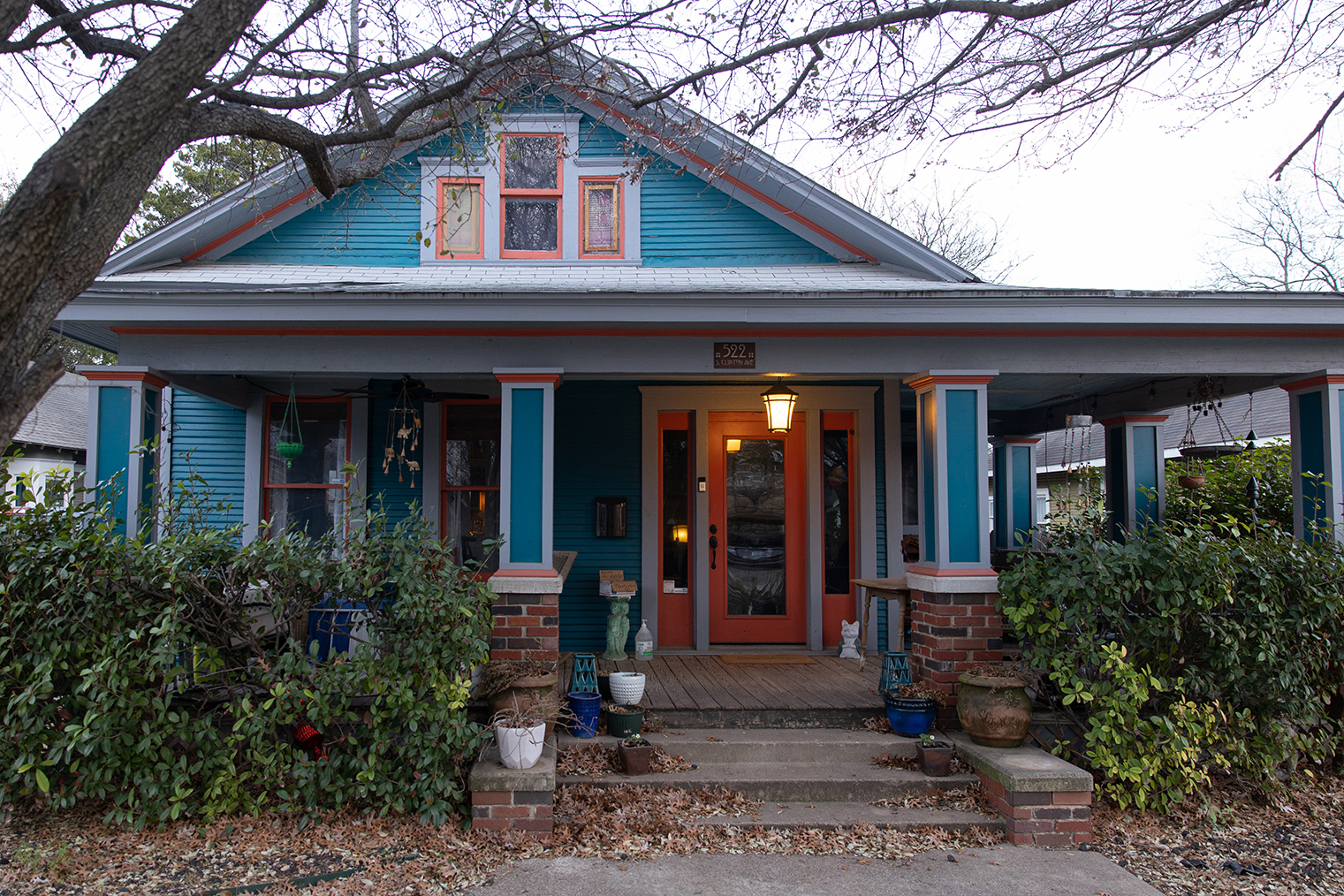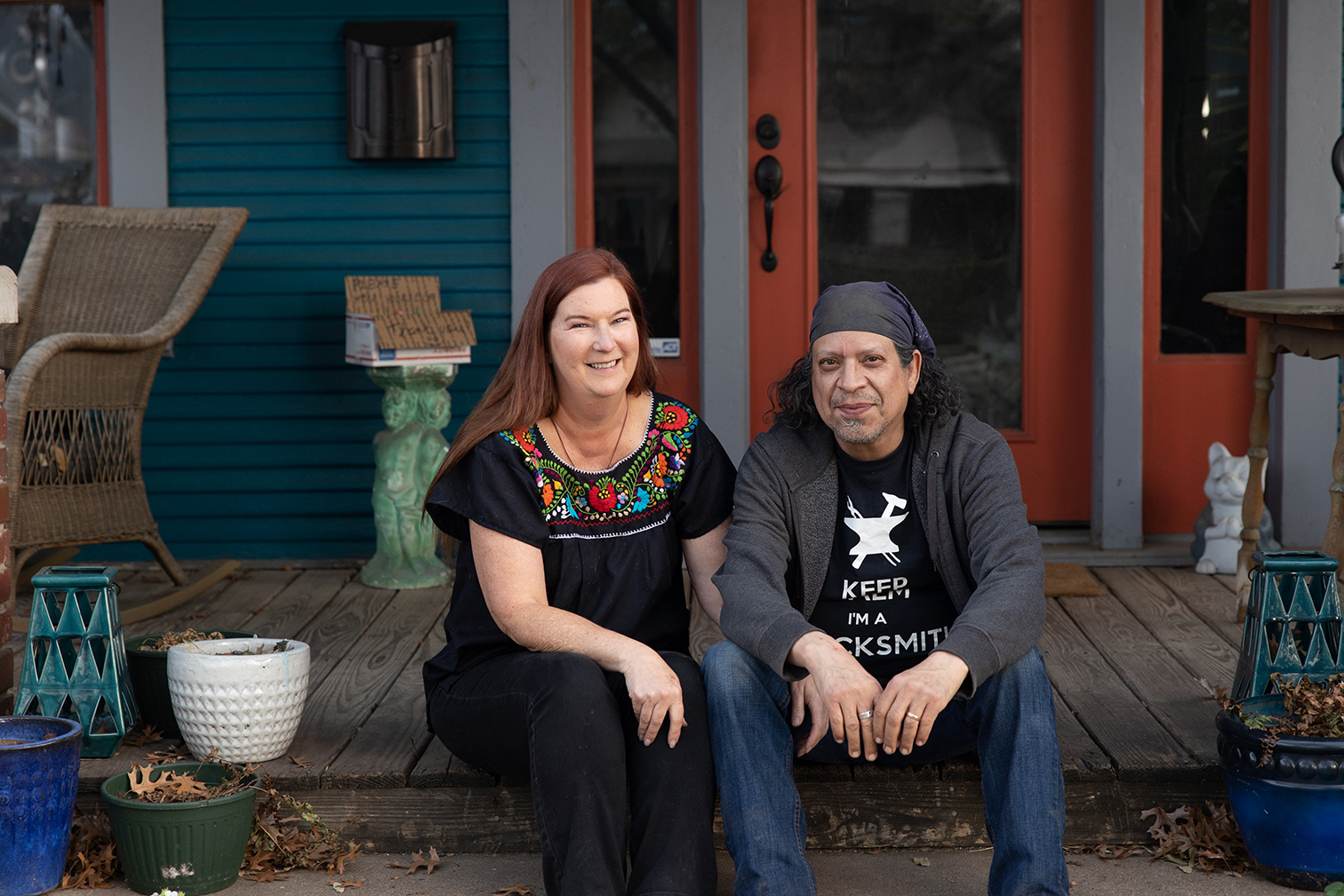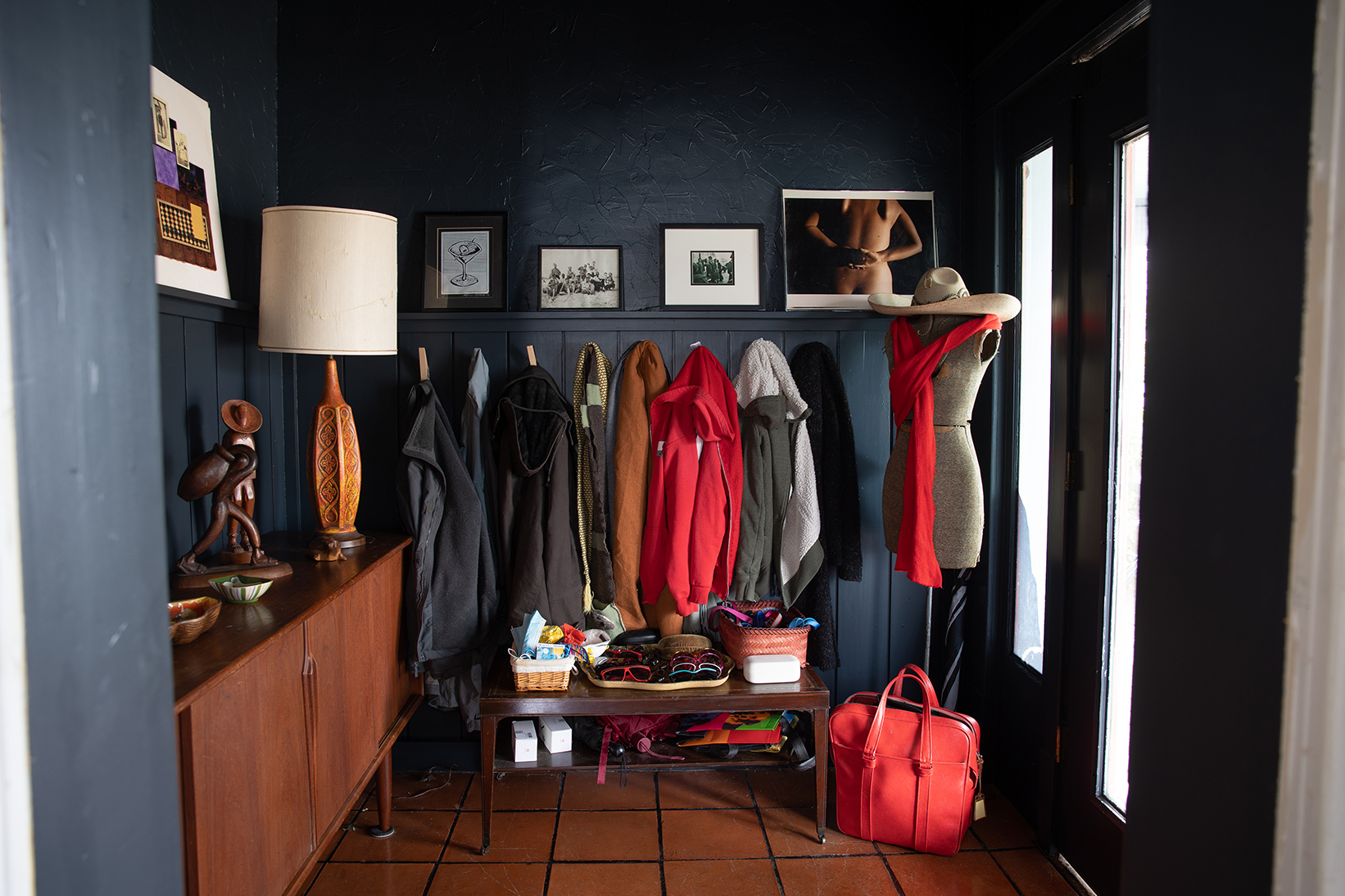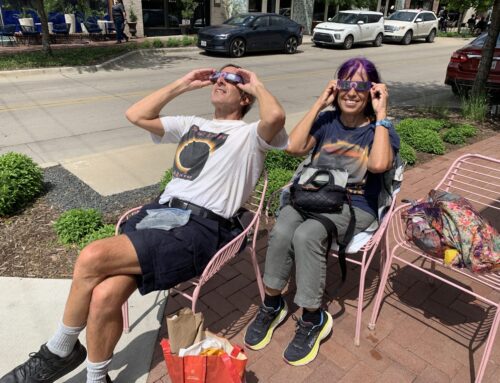
Photography by Gabe Cano.
Michael Evans isn’t one to wait for someone else take initiative.
When he witnessed some of the transitional bungalows that distinguish his South Winnetka neighborhood being torn down and replaced with modern-style homes, he had to step up. An Oak Cliff resident since 2004, he says he didn’t want “McMansions” to overshadow houses like his two-story blue bungalow, with its white front-porch swing and yellow door.
“I’m definitely not afraid to stick my neck out there and get things going or start things up,” Evans says. “I kind of felt like, ‘Why not me?’”
Talk of becoming a conservation district floated through the neighborhood for years, but the process started in August of last year, when Evans and a committee of nine others submitted an application.
Three months later, the City of Dallas held the first pre-application meeting, where senior planner Michael King shared information about what the South Winnetka Heights Conservation District would be and explained the process.
Evans says the meeting brought out a lot of neighbors he’d never met.
Most at that meeting said they didn’t want strict standards, like what kind of windows they can install, or the types of plants allowed.
“We’re simply just trying to save what our neighborhood looks like,” Evans says.
If successful, the move would make the neighborhood the largest collection of transitional bungalows in any conservation district in Dallas.
Kathi Kibbel, a neighborhood resident for 21 years, says she doesn’t care “if you plant purple flowers or have a rainbow doormat,” but she doesn’t want to see a lot of tear downs.
“I want to keep the true flavor of the neighborhood, keep true to what the neighborhood was originally intended to be,” she says.
PRESERVATION BASICS
TWENTY-ONE AREAS in Dallas are registered as landmark districts, or historic districts, which have stricter standards than conservation districts. They’re characterized by structures in the same architectural style or united in their connection to historic events.
HISTORIC DISTRICTS regulate specific materials, colors and styles to be used in construction and renovations.
There are 20 CONSERVATION DISTRICTS in Dallas. If approved, South Winnetka Heights would be the 21st conservation district.
Conservation districts PRESERVE ARCHITECTURAL CHARACTER, without lasering in on historical accuracy.
The APPROVAL PROCESS for renovations in a conservation district is not as difficult as it is in a historic district.
PROJECTS IN HISTORIC DISTRICTS must be reviewed by city staff members, neighborhood taskforces and the landmark commission. But in conservation districts, the plans need only be approved by city staff members.

Evans says there may be some people who just don’t want change, but he thinks many of the concerns he’s heard from his neighbors come from not knowing what a conservation district really is.
Chief planner Bill Hersch says a conservation district helps preserve the architectural character of an area.
Hersch worked on the architectural survey of the proposed district, which included documenting the homes, assigning architectural styles to them and researching when each house was built.
Evans puts it another way.
“These conservation districts are an incredible way for neighbors to take ownership of their area and ensure that the development that’s being done is contextual and is sensitive to the neighborhood that is there already,” he says.
“I don’t care what you do to your house,” he says. “It’s if you ever sell and you decide to move, I want to make sure that your house stays the way it is, pretty much.”
The neighbors won’t be rushed into any decisions because the process to become a conservation district usually takes between one and two years.
The committee is now determining what standards they think the neighborhood wants. The city will help finalize them before neighbors are asked to approve them. At least 58% of property owners in the proposed district must sign the petitions within one year for the process to continue.
“We like it the way it is,” Evans says. “You know, it’s got its own charm, and we want to keep that as much as possible.”






